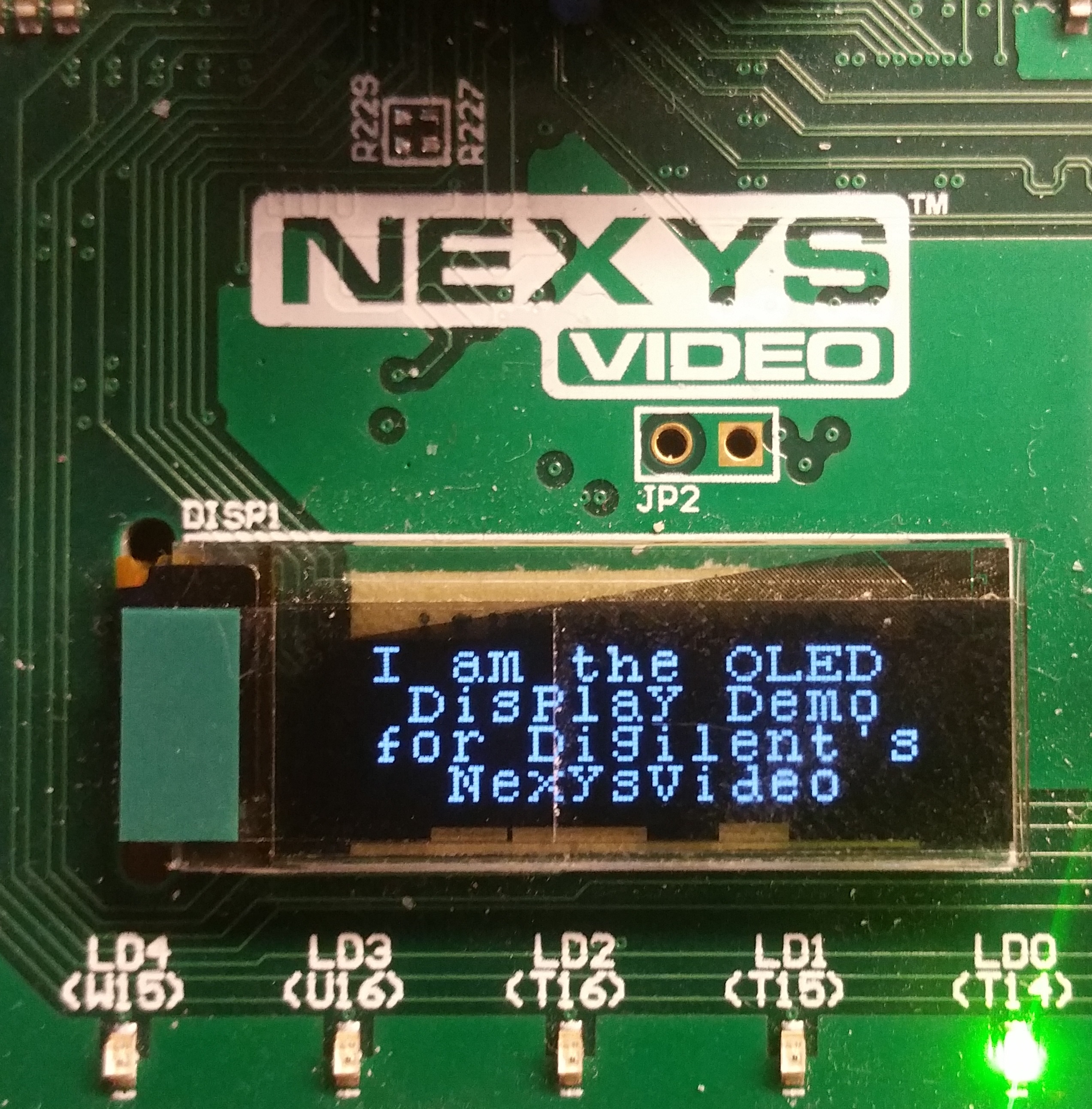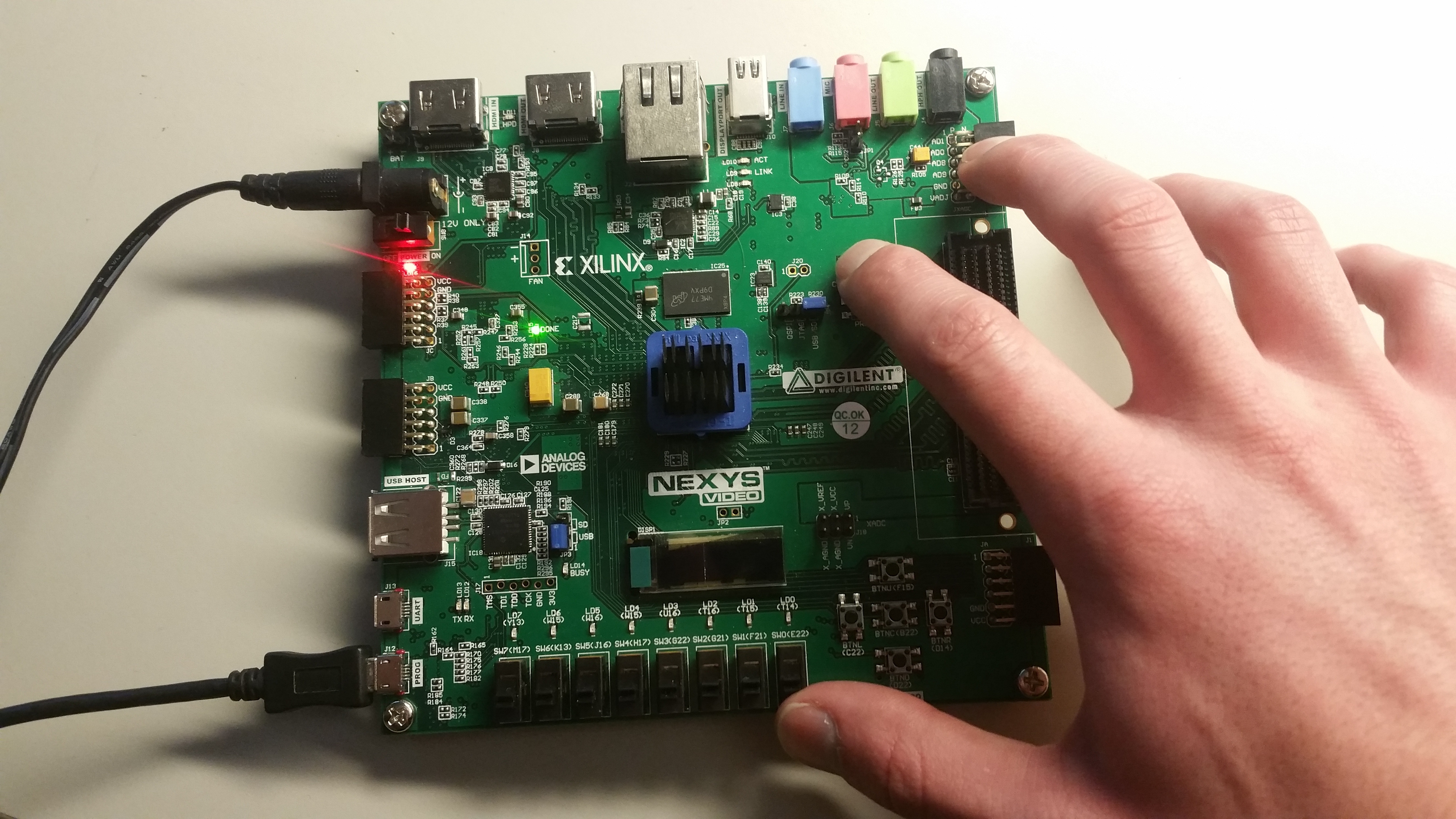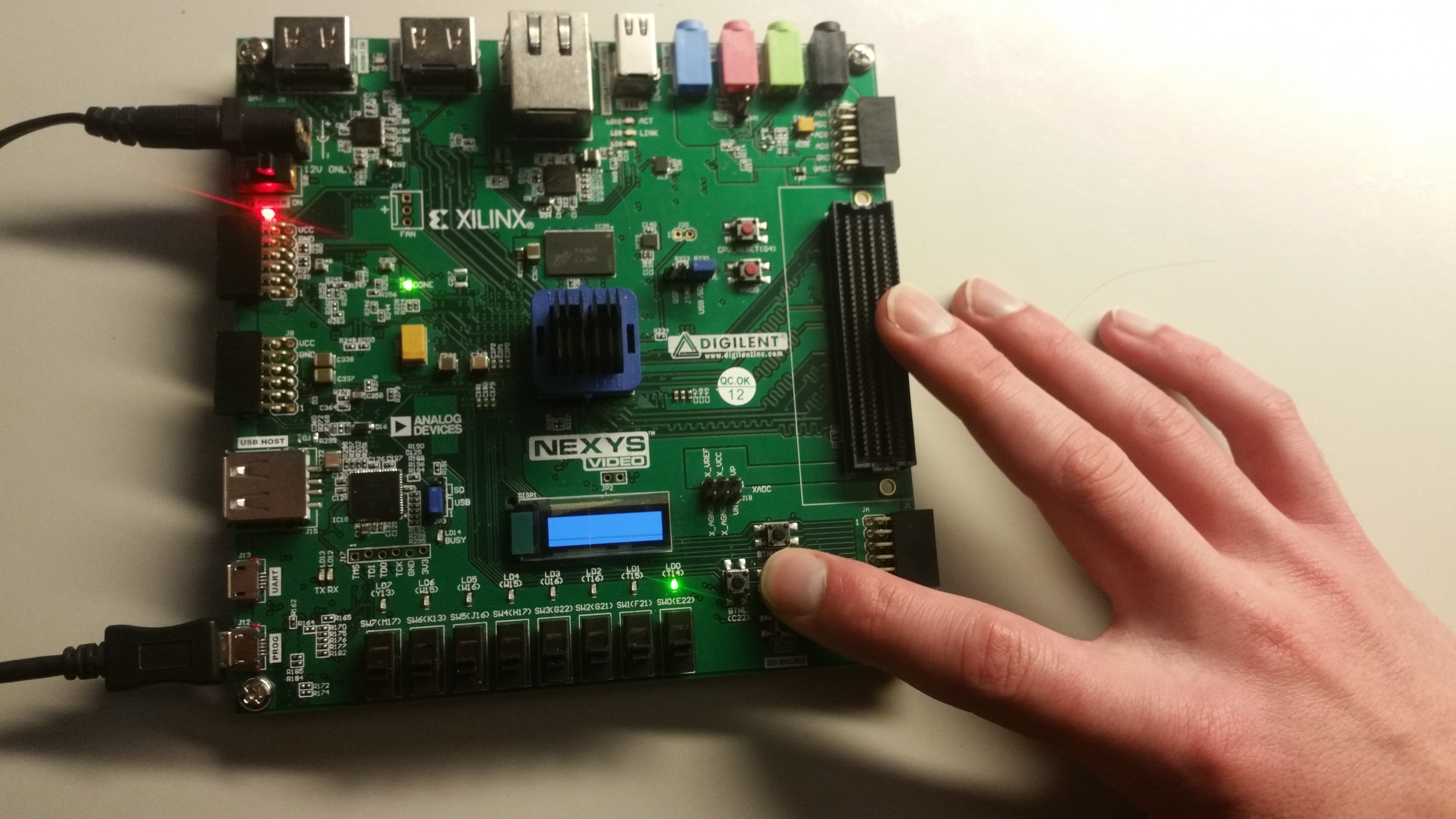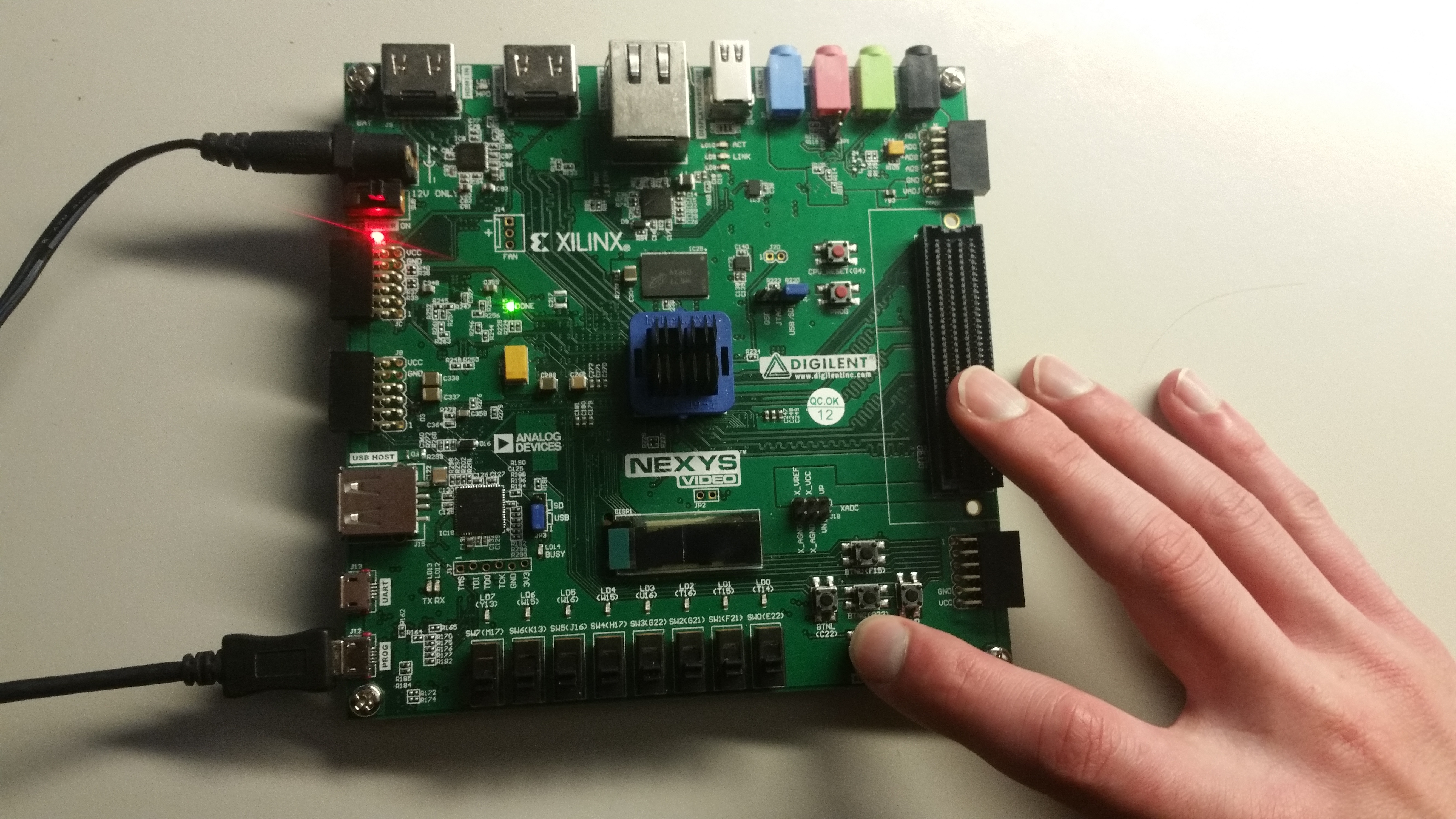This is an old revision of the document!
Nexys Video OLED Demo

Overview
Description
The OLED Demo project demonstrates a simple usage of the Nexys Video's Organic Light Emitting Diode (OLED) Display.
Features Used
| Not Used | Used | |
|---|---|---|
| 8 user switches | X | |
| 8 user LEDs | X | |
| 128×32 monochrome OLED display | X | |
| USB-UART Bridge | X | |
| 160-pin FMC LPC connector | X | |
| Micro SD card connector | X | |
| HDMI Sink and HDMI Source | X | |
| DisplayPort Source | X | |
| Audio codec w/ four 3.5mm jacks | X | |
| 6 user push buttons | X | |
| User EEPROM | X | |
| 10/100/1000 Ethernet PHY | X | |
| 512MiB 800Mt/s DDR3 Memory | X | |
| Serial Flash | X | |
| Four Pmod ports | X | |
| Pmod for XADC signals | X | |
| USB HID Host | X |
Prerequisites
Skills
- Basic familiarity with Vivado
- This experience can be found by walking through our “Getting Started with Vivado” guide
Hardware
- Nexys Video FPGA board
- Micro-USB cable
- Zedboard 12 Volt Power Supply
Software
- Vivado Design Suite 2016.4
- Newer/older versions can be used, but the procedure may vary slightly
Downloads
Nexys Video OLED Demo Project Repository – ZIP Archive GIT Repo
Download and Launch the Nexys Video OLED Demo
1) Follow the Using Digilent Github Demo Projects Tutorial. This is an HDL design project, and as such does not support Vivado SDK, select the tutorial options appropriate for a Vivado-only design. Return to this guide when prompted to check for extra hardware requirements and setup.
2) Ensure that your board is plugged into a 12 Volt power supply and connected to your computer via a Micro USB cable attached to the PROG port. Then return to the Github Projects Tutorial to finish programming the demo onto your board.
Using the Nexys Video OLED Demo
This portion will help you run the demo and observe all its features.
4.1) Startup and Bringdown
The procedures for safely turning on and off the OLED display are handled by the CPU Reset Button. When the board is first turned on, the display is off, and must be brought up, press the CPU Reset Button to turn it on. Once the display is on, when you are done operating the demo, and want to turn your board off, press the CPU Reset Button again to turn the display off. The status of the display is indicated by LED0, if it is on, the display is on.
4.2) Toggle the Display
Once the display has been turned on, each LED on the display can be lit up at once by pressing the center D-Pad button. To return the display to its original state, press this button again.
4.3) Update the Display
With the display on, you can load text onto the display by pressing the up D-Pad button. To clear the display again, press the down D-Pad button. Toggling the entire display while text is loaded will still turn each LED on, then return the display to the splash screen text.





